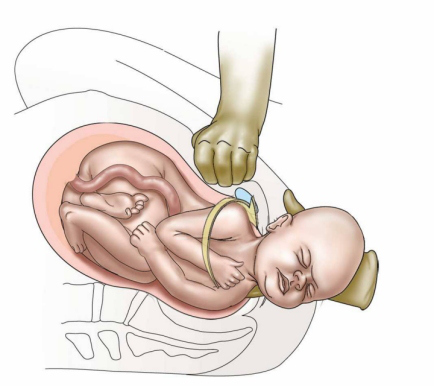What are the symptoms of shoulder dystocia?
Shoulder dystocia occurs during childbirth when the baby’s shoulder becomes lodged behind the mother’s pelvic bone, preventing the baby from being delivered easily. Symptoms of shoulder dystocia typically arise during labor and delivery and include:
- Difficulty Delivering the Baby’s Shoulders: After the head is delivered, the baby’s shoulders may not easily pass through the birth canal. This can result in a prolonged delivery.
- Turtle Sign: The baby’s head may retract back towards the mother’s perineum after crowning, resembling a turtle withdrawing into its shell.
- Excessive Tugging or Pulling: The healthcare provider may need to use significant force or maneuvers to help deliver the baby’s shoulders, which can cause concern.
- Abnormal Fetal Heart Rate: A decrease in the baby’s heart rate can occur if the baby is under stress during the delivery. This may be detected through fetal monitoring.
- Injuries or Weakness in the Baby: If shoulder dystocia is not managed promptly, it can lead to complications such as brachial plexus injury (Erb’s palsy), where the baby may have weakness or paralysis in the arm.
- Maternal Complications: The mother may experience excessive bleeding or tears in the vaginal or perineal tissues due to the difficult delivery.
Immediate and effective management is crucial to resolve shoulder dystocia and minimize potential complications for both the baby and the mother.
What are the causes of shoulder dystocia?
Shoulder dystocia can arise from various factors involving both the baby and the mother. For the baby, conditions such as being significantly larger than average (macrosomia) or having an abnormal shoulder position can increase the risk. Maternal factors also play a role; for instance, women with diabetes are more likely to have larger babies, while maternal obesity can further complicate the delivery. Additionally, prolonged labor, particularly during the pushing stage, and certain labor interventions like forceps or vacuum extraction can contribute to shoulder dystocia. The shape or size of the mother’s pelvis might also affect the delivery. Multiple births and a history of previous shoulder dystocia can further heighten the risk.
What is the treatment for shoulder dystocia?
The treatment for shoulder dystocia involves various maneuvers and interventions aimed at safely delivering the baby. Initially, healthcare providers use techniques such as the McRoberts maneuver, which involves flexing the mother’s legs towards her abdomen to widen the pelvic opening, and suprapubic pressure applied just above the pubic bone to help dislodge the baby’s shoulder. Rotational maneuvers, like the Wood’s screw maneuver, are employed to rotate the baby’s shoulders and free the impacted shoulder. If necessary, the posterior arm of the baby may be delivered to reduce shoulder width.
In some cases, an episiotomy, or surgical incision, may be made to create more space for the delivery. Adjusting the mother’s position, such as turning her to hands and knees, might also help resolve the situation. If these methods do not work, instruments like forceps or vacuum extraction may be used, and in more severe cases, a cesarean section might be performed if the baby’s condition is worsening. After the delivery, both the mother and baby are monitored for any complications related to the shoulder dystocia or the delivery process, and follow-up care is provided as needed.

Leave a Reply
You must be logged in to post a comment.